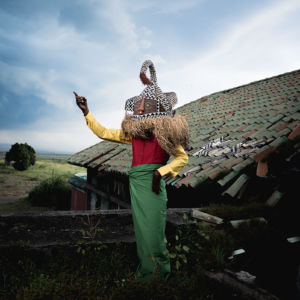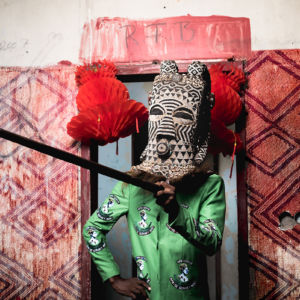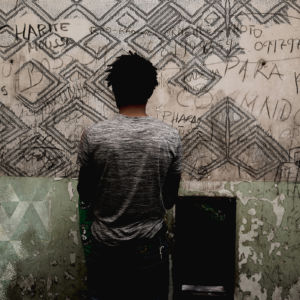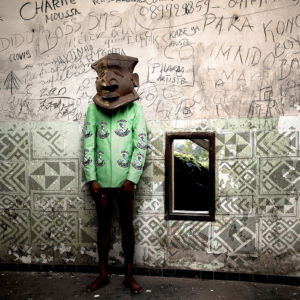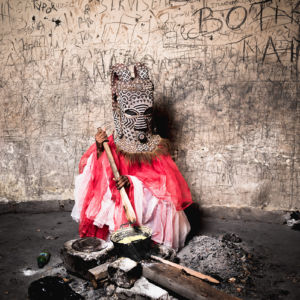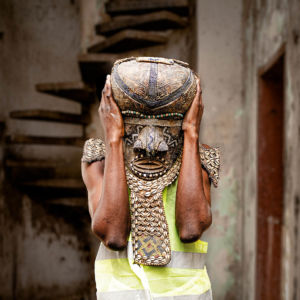Ancestral Root/Racine Ancestrale:
Photographs by Rachel Malaika
African Art Online: a series of online exhibitions of emerging African artists
Curated by the University of North Carolina African Studies Center
Many thanks to Mr. Yann Kwete of Kub’Art Gallery (Kinshasa and Montreal) for all of his assistance.
Kinshasa-based photographer Rachel Malaika creates images that evoke layers of Congolese history and challenge Congolese structures of power. Her dramatically staged photographs draw viewers’ attention to the value of Congolese culture, and to the importance of preserving elements of the past.
In this series of photographs, Malaika uses masks, bodies, and ruins to recall and reimagine the long, despotic rule of Mobutu Sese Seko, president of what is today the Democratic Republic of Congo (DRC) from 1965 until 1997. As a tool for propaganda, Mobutu made use of the country’s past, invoking authenticity and tradition to consolidate and legitimate his power. Mobutu invented many of the “traditions” he touted as elements of Congolese culture, from clothing and architecture to the names of people, cities, and the country itself, which he renamed Zaire. This artificially constructed authenticity lacks the deep roots of historical Congolese culture, which both predates and outlives the destructive reigns of dictators.
Rachel Malaika’s Ancestral Root photographs were created at a site that vividly recollects the Mobutu era’s flamboyant heyday as well as its demise. Forty kilometers east of Kinshasa, Mobutu built a fantastic, baroque palace in the town of Nsele. Constructed in the 1970s, the palace combined a Chinese pagoda, giant cement animals, and painted tiles that incorporated decorative patterns borrowed from Kuba art, a famed Central African culture and kingdom with rich artistic traditions. The figures in the photographs wear Kuba royal masks, as they pose amid the ruins of Mobutu’s Kuba- and Chinese-inflected palace. Thus, Malaika presents tradition in two forms, artificial and actual. While the artificial tradition—represented by the palace—is in ruins, Malaika’s incorporation of masks reminds viewers of the sustenance they can draw from continuity with the past.
Along with her exploration of the DRC’s political history, much of Malaika’s work addresses the region’s long history of powerful women, expressed largely but not exclusively in spiritual realms. Through images of priestesses and queens, Malaika’s photographs offer a counter-narrative to the political and economic disempowerment of women in modern and contemporary DRC.
–Victoria L Rovine, Director, UNC African Studies Center

Born in Kinshasa, Democratic Republic of the Congo, where she lives and works, Rachel Malaika is a multidisciplinary artist who combines painting, installation, and photography. The last—photography—is her preferred medium. She uses her camera to capture images that take shape in her imagination, expressed in diverse forms.
Rachel Malaika came to the visual arts through the influence of artist Berry Malundamene, a teacher at the Academy of Fine Arts in Kinshasa whose works she admired. This teacher’s encouragement inspired her to join the Academy of Fine Arts against her parent’s wishes. In 2008, she graduated with a degree in Visual Communication. She has shown her work in galleries and institutions in DRC as well as in Cameroon and Belgium.
To open the images below in a slide show, please click an image. On some devices, you may need to double click. You will then be able to scroll through the images using the side arrows.
All images: 2021, Photograph, 24″ x 31″ (60 x 80 cm)






